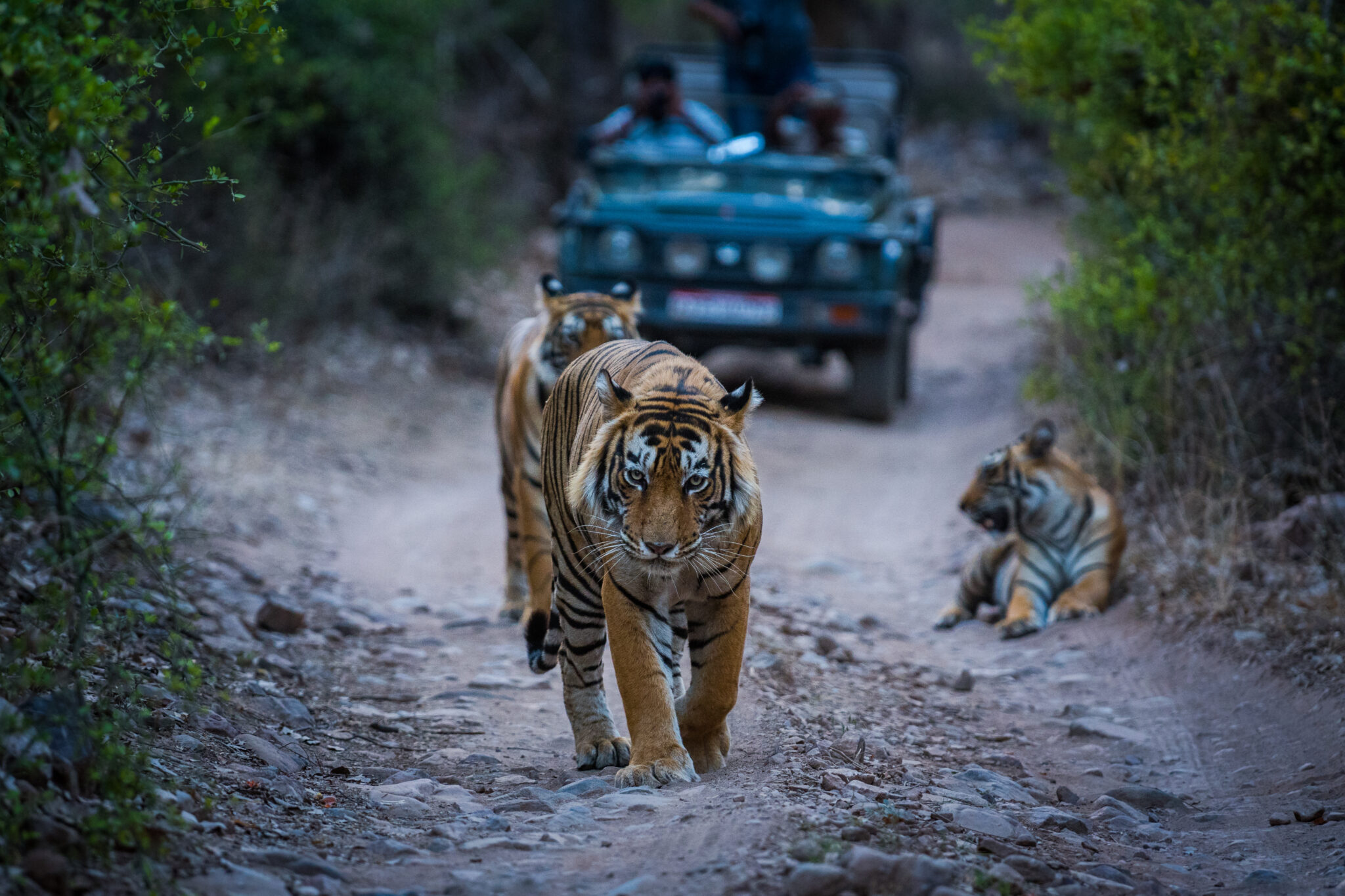
The wildlife tourism market is projected to reach USD 219.9 Billion in 2032 and USD 135 Billion in 2022. Its projected to grow at robust 5% CAGR during 2022-2032. These insights are based on a report on Wildlife Tourism Market by Future Market Insights.
Tigers are an important part of many wildlife sanctuaries, and Ranthambore wildlife sanctuary and Kanha National Park in India are among the few places where tourists can see these animals up close. Many visitors are visiting these sanctuaries simply to see tigers, which is boosting global wildlife tourism.
Wildlife Tourism: Positive and Negative Impact
During the visit to wildlife destinations, tourists contribute to the improvement and conservation of the conditions of wild animals. Wildlife tourism also improves the life of the local tribes, as when tourism flourishes, they get opportunities of improved livelihood. Continuous flow of tourists keep the poachers away from killing endangered species of animals. When tourists visit wildlife sanctuaries certain amount of entrance fee is charged from them.
This money is directed towards animal conservation programmes. However, there are some negative impacts too. The disturbance is always high when tourists approach the wildlife very closely to take photos. Also, the breeding patterns of animals may also get disturbed due to constant pressure of tourists to take photographs of animals with their young ones.
Wildlife Tourism: Drivers
As the entry fee charged from tourists is invested in the conservation of animals, more and more tourists are willing to re-visit wildlife sanctuaries and are ready to pay extra as entry fees, just to ensure animal life conservation. In addition to merely watching animals, tourists are also aware of the various fauna and flora species, which attracts them to wildlife tourism, which is consequently driving the growth of the wildlife tourism sector.
Lot of infrastructural development in and nearby wildlife sanctuaries such as hotels, guest houses and eco-tourism villages and jungles are also attracting a large number of tourists. So now tourists not only visit national parks and wildlife sanctuaries to see animals but also for relaxation which they get by being away from the hustle and bustle of city life. Due to better infrastructural development movie shootings also take place in nearby areas which attract local travellers and this fuels the growth of wildlife tourism.
Many schools arrange trips in wildlife sanctuaries to introduce students to the flora and fauna in sanctuaries. Besides, wildlife photographers who keep visiting the sanctuaries also create robust development in the sector of wildlife tourism. Many wildlife sanctuaries are famous for tigers. Ranthambore wildlife sanctuary and Kanha National Park in India are among the few sanctuaries where tourists can get very close to tigers. Many tourists frequently visit these sanctuaries just to see tigers and this is boosting the global wildlife tourism sector.
Famous Wildlife Sanctuaries Across the World
Lone Pine Koala Sanctuary in Brisbane, Australia, Chengdu Moonbear Rescue Centre in China, Noah’s Ark in Georgia, USA, Corbett National Park in Uttarakhand, India are some of the famous wildlife sanctuaries across the globe.



 share
share


















































